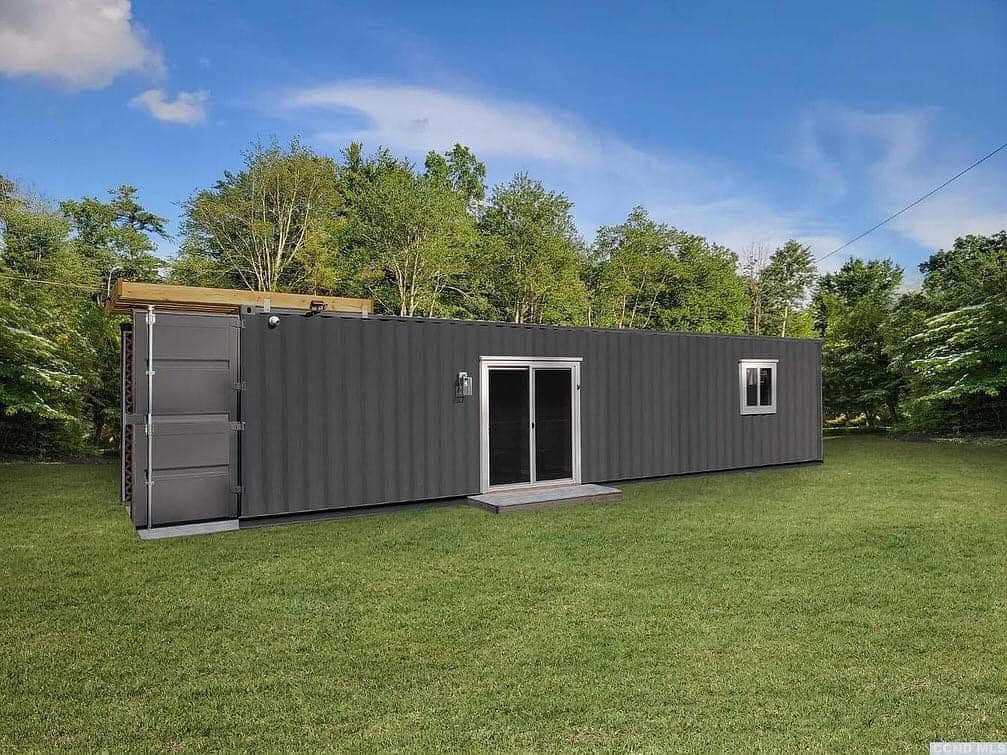Shipping container homes have quickly grown from an eco-friendly trend into a mainstream housing solution. But beyond their affordability and modern appeal, these steel structures have a secret superpower: they’re incredibly weather-resistant. Whether you’re in a region with scorching heat, heavy snow, torrential rains, or even the occasional hurricane, a well-designed container home can take it all.
In this post, we’ll explore what makes shipping container homes so resilient, and how smart design can turn them into weatherproof shelters built to last.



1. Why Shipping Containers Are Inherently Tough
Shipping containers are originally built to travel across oceans, stacked high on cargo ships and exposed to the harshest conditions. That means they’re:
- Made from corrosion-resistant steel
- Wind- and water-resistant by design
- Able to carry extreme weight and pressure
This industrial-grade durability makes them ideal for conversion into homes that can brave extreme weather.

2. Insulation That Tackles All Climates
One concern people have is: “Won’t it be too hot or cold inside a metal box?” The answer lies in proper insulation.
- In hot climates, spray foam or rigid foam boards keep heat out and cool air in.
- In cold areas, insulation protects against freezing temperatures and heat loss.
- Double-pane windows and thermal breaks prevent condensation and drafts.
A well-insulated container home can feel just as comfortable as a traditional house—often with a smaller carbon footprint.

3. Roofing & Drainage: Shield Against Rain and Snow
Container homes must be modified to handle heavy rainfall and snow loads. The best designs include:
- Sloped or green roofs to allow proper runoff
- Gutters and rainwater harvesting systems
- Reinforced framing for snow-prone regions
Waterproof coatings and roof extensions also help protect vulnerable areas from leaks.
also read,

4. Storm-Ready Foundations and Anchors
To survive high winds or hurricanes, container homes should be:
- Firmly anchored to the ground
- Built on concrete piers or slab foundations
- Positioned with wind patterns in mind
Some homeowners in hurricane-prone areas even reinforce doors and windows with storm shutters or impact-resistant glass.

5. Fire Resistance in Hot Zones
In wildfire regions, container homes offer more resistance than traditional wood-frame structures. With metal exteriors and fire-retardant materials, they can withstand extreme heat far better than many other homes.
Some even install ember-resistant vents and fireproof cladding for added safety.
6. Modular Designs That Adapt and Expand
Shipping container homes are modular, which means they can be:
- Expanded for growing families
- Reconfigured for changing environments
- Easily maintained or replaced if damage occurs
This adaptability is key to long-term weather survival.
7. Real-Life Example: A Storm-Proof Home in Florida
One family in Florida built a 2-container home just outside of Tampa. When Hurricane Ian swept through in 2022, their home stood strong while neighbors’ homes suffered severe damage. With reinforced foundations, hurricane-rated windows, and solid steel walls, their home became a refuge in the storm.
Final Thoughts
Whether you’re seeking an off-grid retreat in the desert, a cozy home in a snowy forest, or a coastal hideaway near the sea, shipping container homes offer unmatched durability and flexibility.
They’re not just trendy—they’re tough. With the right construction, a container home can truly survive any weather.
